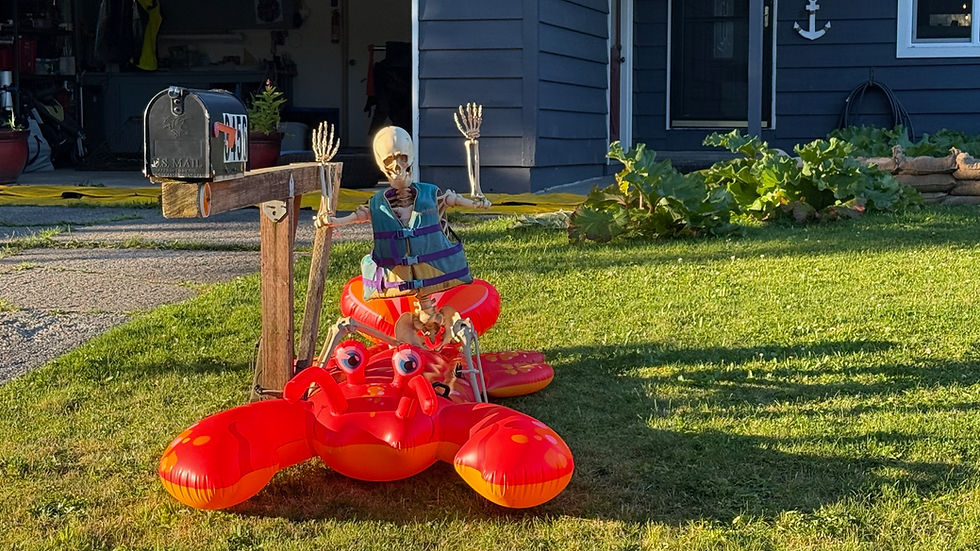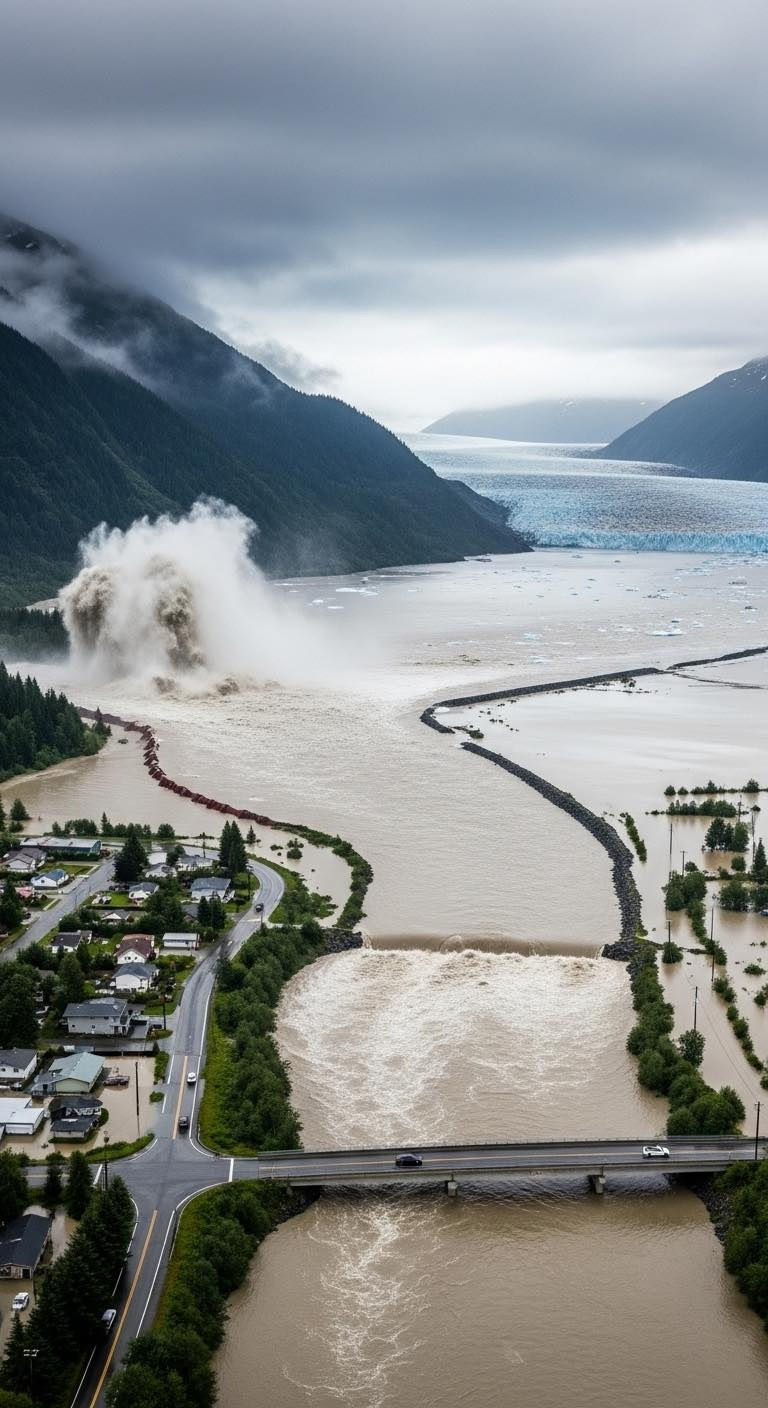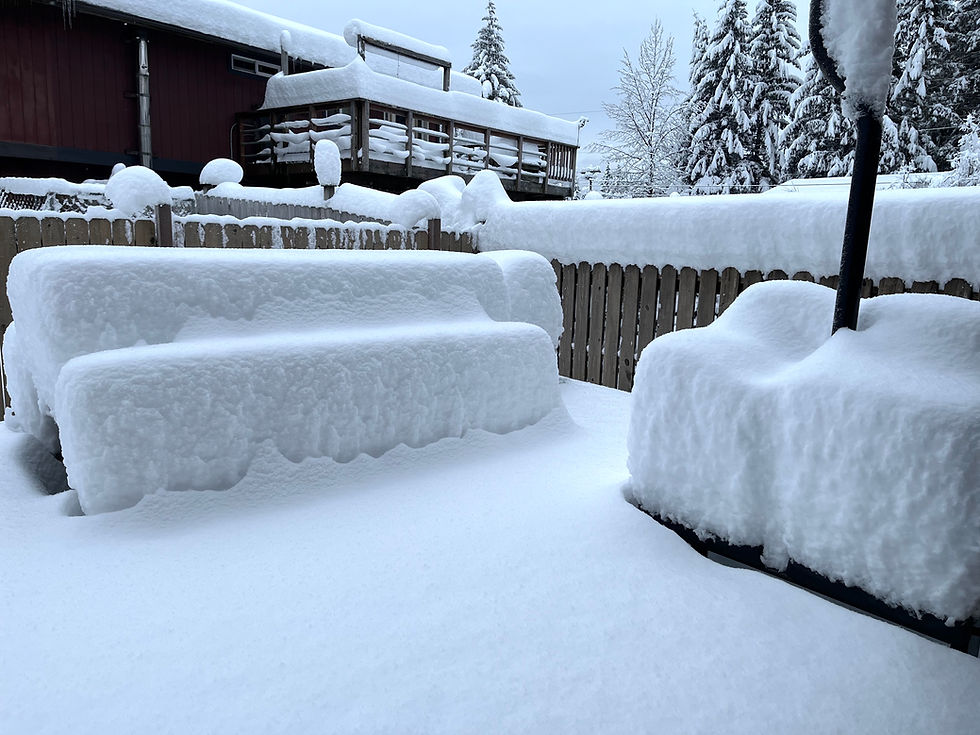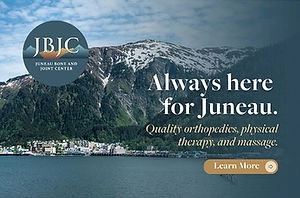How the rest of the world covered the 2025 GLOF
- Ellie Ruel

- Aug 14
- 3 min read
Updated: Aug 14
Some details missing or fuzzy as national news outlets cover Juneau’s flood

By Ellie Ruel
Juneau Independent
The HESCO barriers were referred to as a “makeshift dirt wall” by The Washington Post and “Hesko barriers” by CBS. The Associated Press let its geographically challenged readers know record flooding in Alaska’s capital wouldn’t affect Friday’s U.S.-Russia summit in Anchorage.
Another somewhat confusing moment was USA Today’s explanation of why the localized power outages were less than ideal for residents, which cited Alaskans’ apparent tendencies toward chest freezers.
“Power loss is a significant concern for Alaska residents who often keep chest freezers filled with frozen fish and game,” the article reads.
While Mendenhall Valley residents were riding out a river crest of 16.65 feet triggered by a glacial lake outburst flood released from Suicide Basin, their predicament was making national headlines.
The situation piqued widespread interest in large part due to the rarity of such an event and an overall focus on natural disasters in relation to a changing climate, and led to some interesting lenses being applied to Alaska’s capital city.
Outlets like the Associated Press, The New York Times, The Washington Post, CNN, FOX Weather, CBS, and USA Today picked up the story mid-Tuesday into Wednesday evening. A reporter from Fox 5 New York made a digital appearance near the end of a Wednesday press briefing to ask “Is this common for your area? Is the glacial melt due to climate change?” Other journalists from across the country were spotted in the comments section of local Facebook groups, trying to connect with residents affected by the flood.
A notable focus of all the articles (excluding FOX Weather and The New York Times) was the temporary levee that stymied a majority of the floodwaters before they caused massive destruction to outlying neighborhoods. Most of the stories misspelled the official name of the HESCO barriers, calling them “‘Hesco’” barriers, or in CBS’s case, mistranscribed a quote from city manager Katie Koester as “Hesko.” The Washington Post went as far as to call the barriers a “makeshift dirt wall” in their headline.
Some stories seemingly got off the topic at hand. The Associated Press’s more comprehensive report on the flood, written with contributions from a locally based reporter, included a note for readers unfamiliar with state geography.
“Juneau, which is accessible only by boat and plane, is 570 miles (917 kilometers) southeast of Anchorage, Alaska’s largest city. The flooding won’t impact Friday’s summit in Anchorage between President Donald Trump and Russian President Vladimir Putin,” the article stated.
With a focus on how climate change has made the outbursts more severe, some articles are fuzzy on the details of how the basin works.
For instance, CNN Weather’s report says that warming temperatures in Alaska have “severely reduced the expanse of the Mendenhall Glacier and its Suicide Basin.” The first part of the statement is correct, but the second part is an oversimplification of the matter – according to researchers, the basin’s actual hydraulic capacity is determined by the competing factors of a shrinking ice dam and growing size as Mendenhall Glacier retreats.
The same CNN article also said that the 2024 flood “impacted more than 100 homes in Juneau.” While not a false statement in itself, it definitely downplays the nearly 300 homes damaged in last year’s catastrophic flood. USA Today made a similarly underexaggerated statement, saying that last year’s 15.99-foot peak “flooded basements and damaged roads.”
For people getting their information from social media, the misperceptions and blatant falsehoods occurred on a much larger scale. Some posters, for instance, used AI to generate photos that to any Juneau resident would clearly be beyond absurd — but not necessarily as obvious to an outsider’s eye.
• Contact Ellie Ruel at ellie.ruel@juneauindependent.com.













